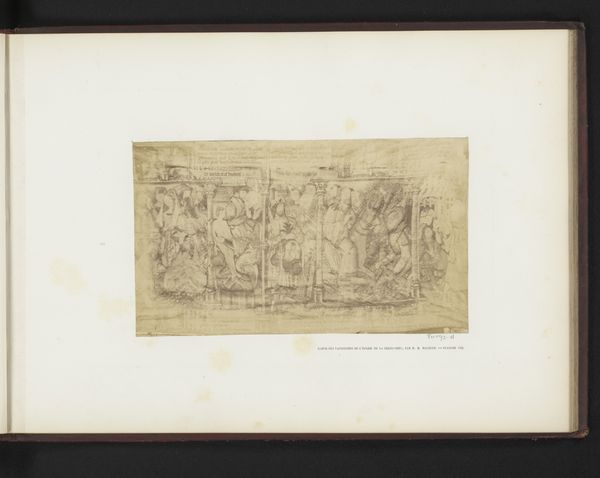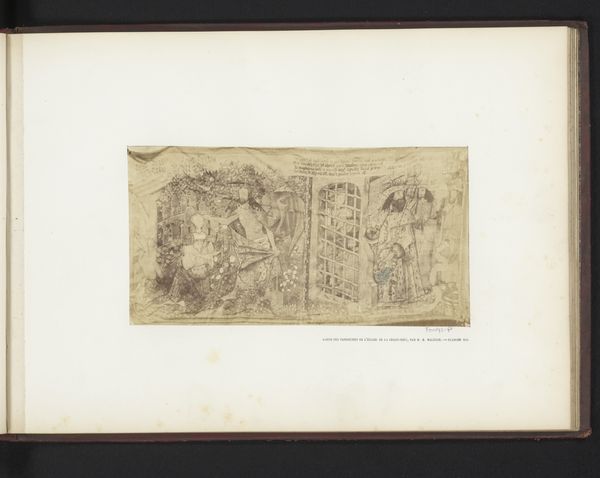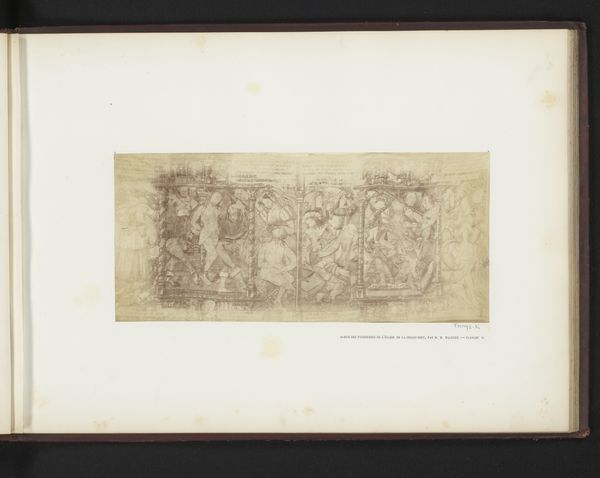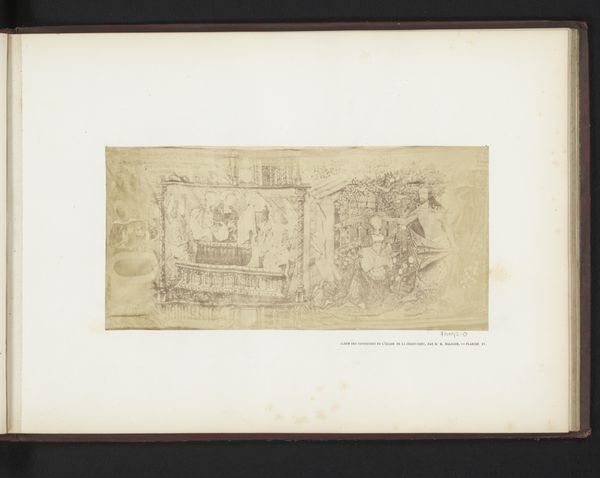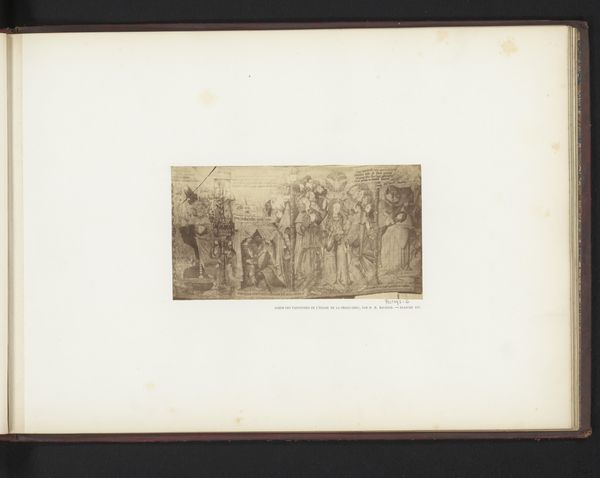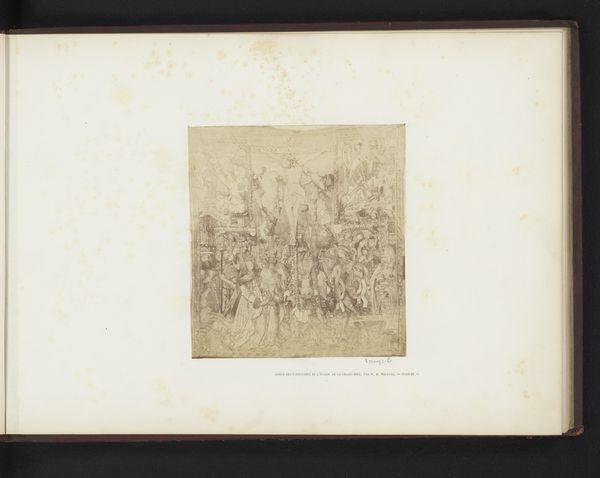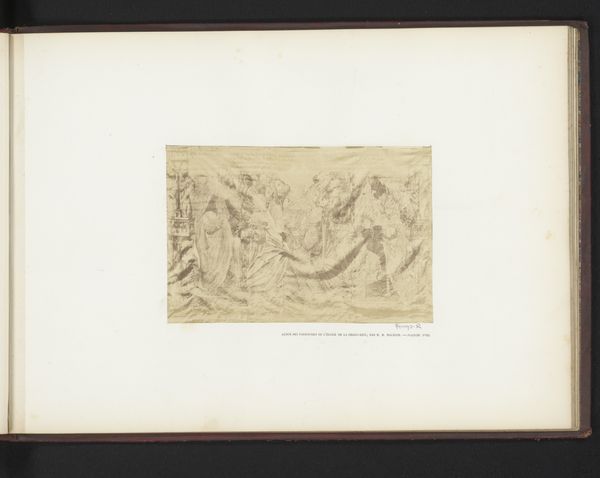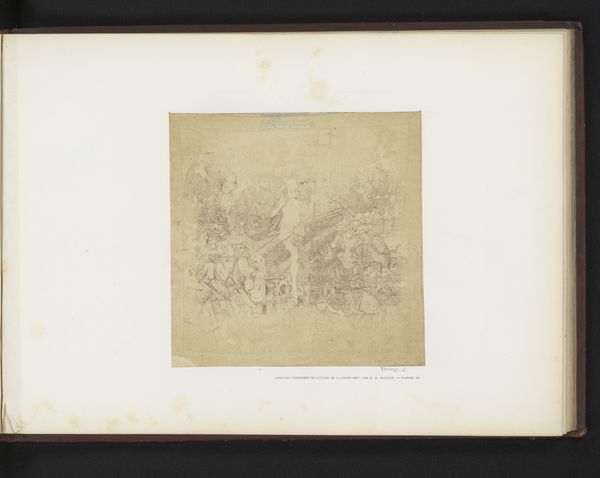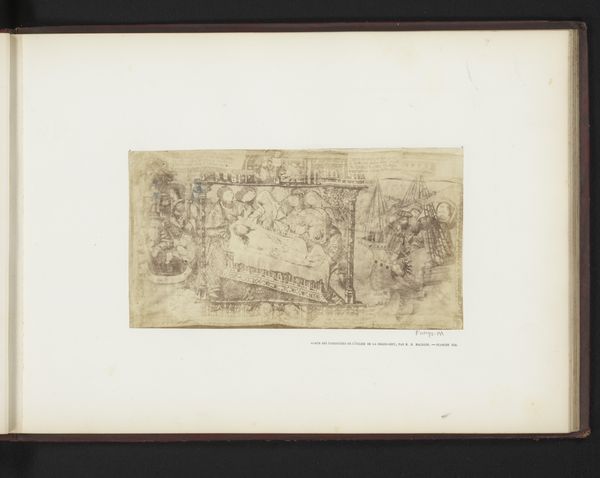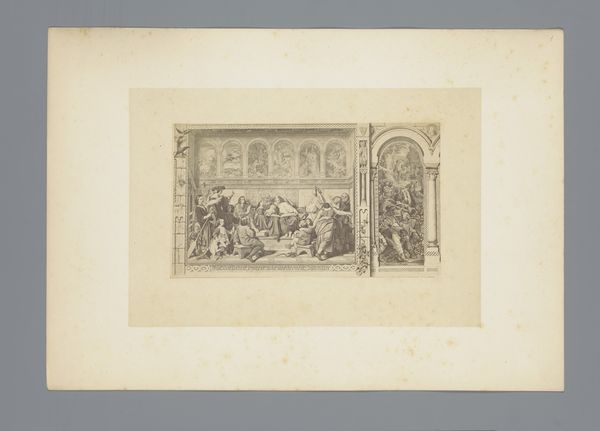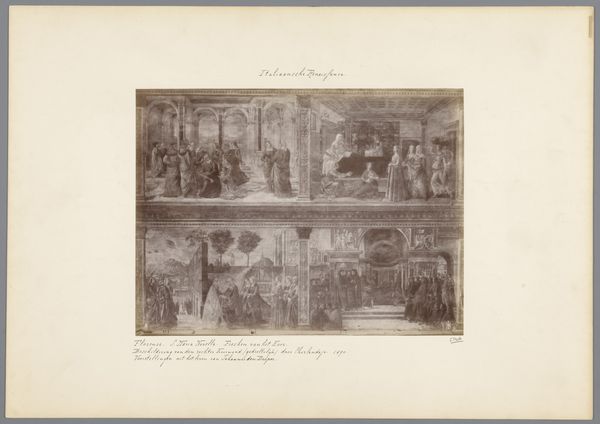
Tapijt met de opstanding van Christus en prefiguraties in een kerk te La Chaise-Dieu c. 1868 - 1873
0:00
0:00
print, photography, albumen-print
#
medieval
#
narrative-art
# print
#
photography
#
history-painting
#
albumen-print
Dimensions: height 108 mm, width 192 mm
Copyright: Rijks Museum: Open Domain
Curator: Hippolyte Malègue's albumen print, titled "Tapijt met de opstanding van Christus en prefiguraties in een kerk te La Chaise-Dieu," dates circa 1868 to 1873. It's an image of a tapestry depicting the Resurrection. What are your initial impressions? Editor: Eerie. Like peering into a ghostly medieval pageant, all shadowy figures and blurred narratives. It feels like a memory struggling to hold its shape, something glimpsed from the corner of my eye during a particularly intense dream about, I don’t know, crusades and stained glass. Curator: The composition invites this spectral reading. The figures emerge from a soft-focus background, and Malègue emphasizes texture over precise form. The strategic blurring directs the viewer to specific iconographic elements while contributing to the tapestry's dreamlike presence as it comes to us through a photographic medium. Editor: Absolutely. It’s interesting how photography, normally a tool for capturing reality, here acts as a veil. The softening of details transforms this church tapestry, designed to instruct, into a haunting meditation. The print looks as though it’s been buried for a hundred years. Curator: It seems that the photograph invites a semiotic investigation into both art production and reception. The layering of mediums—tapestry and photography—creates another interpretative lens. Editor: Right! I see these strong visual echoes. A dance of light and shadow seems intentional—like, did Malègue stage it? I'm almost tempted to interpret the blurred effect as a clever statement about religious faith, obscured by the passage of time. And then think of what it all meant to those artisans back then! Wild! Curator: Fascinating! It showcases a particular mode of vision through its artistic production as a reinterpretation and reflection upon sacred time, captured using the technology of the time period. Editor: Overall, though, beyond the theory, the picture’s simply captivating; the artist understood perfectly how to tease at the fabric of history. I would've never thought that medieval tapestries would spark such thought about our moment, today! Curator: Yes, its appeal certainly resides in its ability to meld past and present through an examination of material, process, and light.
Comments
No comments
Be the first to comment and join the conversation on the ultimate creative platform.
